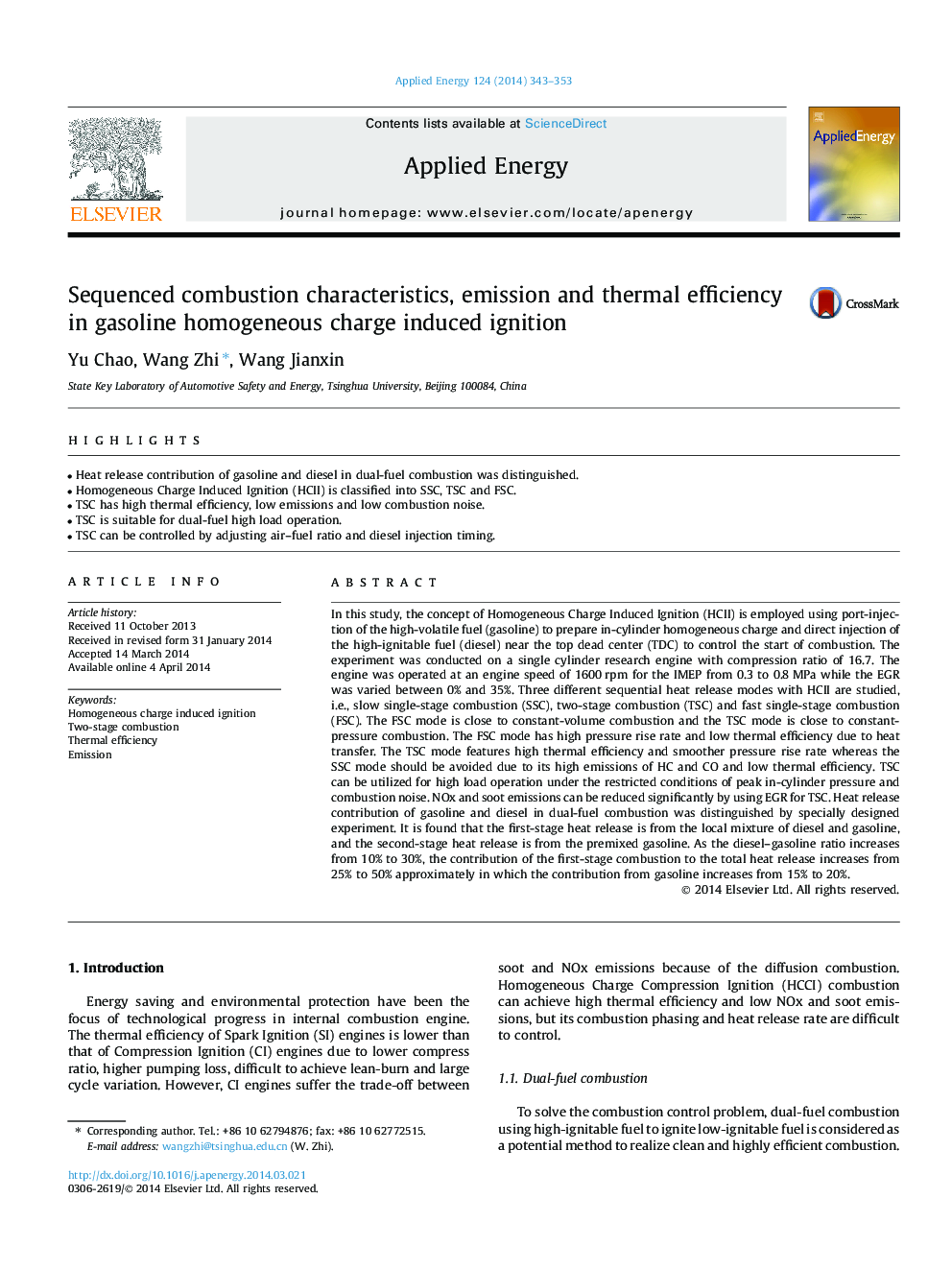| کد مقاله | کد نشریه | سال انتشار | مقاله انگلیسی | نسخه تمام متن |
|---|---|---|---|---|
| 242838 | 501903 | 2014 | 11 صفحه PDF | دانلود رایگان |
• Heat release contribution of gasoline and diesel in dual-fuel combustion was distinguished.
• Homogeneous Charge Induced Ignition (HCII) is classified into SSC, TSC and FSC.
• TSC has high thermal efficiency, low emissions and low combustion noise.
• TSC is suitable for dual-fuel high load operation.
• TSC can be controlled by adjusting air–fuel ratio and diesel injection timing.
In this study, the concept of Homogeneous Charge Induced Ignition (HCII) is employed using port-injection of the high-volatile fuel (gasoline) to prepare in-cylinder homogeneous charge and direct injection of the high-ignitable fuel (diesel) near the top dead center (TDC) to control the start of combustion. The experiment was conducted on a single cylinder research engine with compression ratio of 16.7. The engine was operated at an engine speed of 1600 rpm for the IMEP from 0.3 to 0.8 MPa while the EGR was varied between 0% and 35%. Three different sequential heat release modes with HCII are studied, i.e., slow single-stage combustion (SSC), two-stage combustion (TSC) and fast single-stage combustion (FSC). The FSC mode is close to constant-volume combustion and the TSC mode is close to constant-pressure combustion. The FSC mode has high pressure rise rate and low thermal efficiency due to heat transfer. The TSC mode features high thermal efficiency and smoother pressure rise rate whereas the SSC mode should be avoided due to its high emissions of HC and CO and low thermal efficiency. TSC can be utilized for high load operation under the restricted conditions of peak in-cylinder pressure and combustion noise. NOx and soot emissions can be reduced significantly by using EGR for TSC. Heat release contribution of gasoline and diesel in dual-fuel combustion was distinguished by specially designed experiment. It is found that the first-stage heat release is from the local mixture of diesel and gasoline, and the second-stage heat release is from the premixed gasoline. As the diesel–gasoline ratio increases from 10% to 30%, the contribution of the first-stage combustion to the total heat release increases from 25% to 50% approximately in which the contribution from gasoline increases from 15% to 20%.
Journal: Applied Energy - Volume 124, 1 July 2014, Pages 343–353
